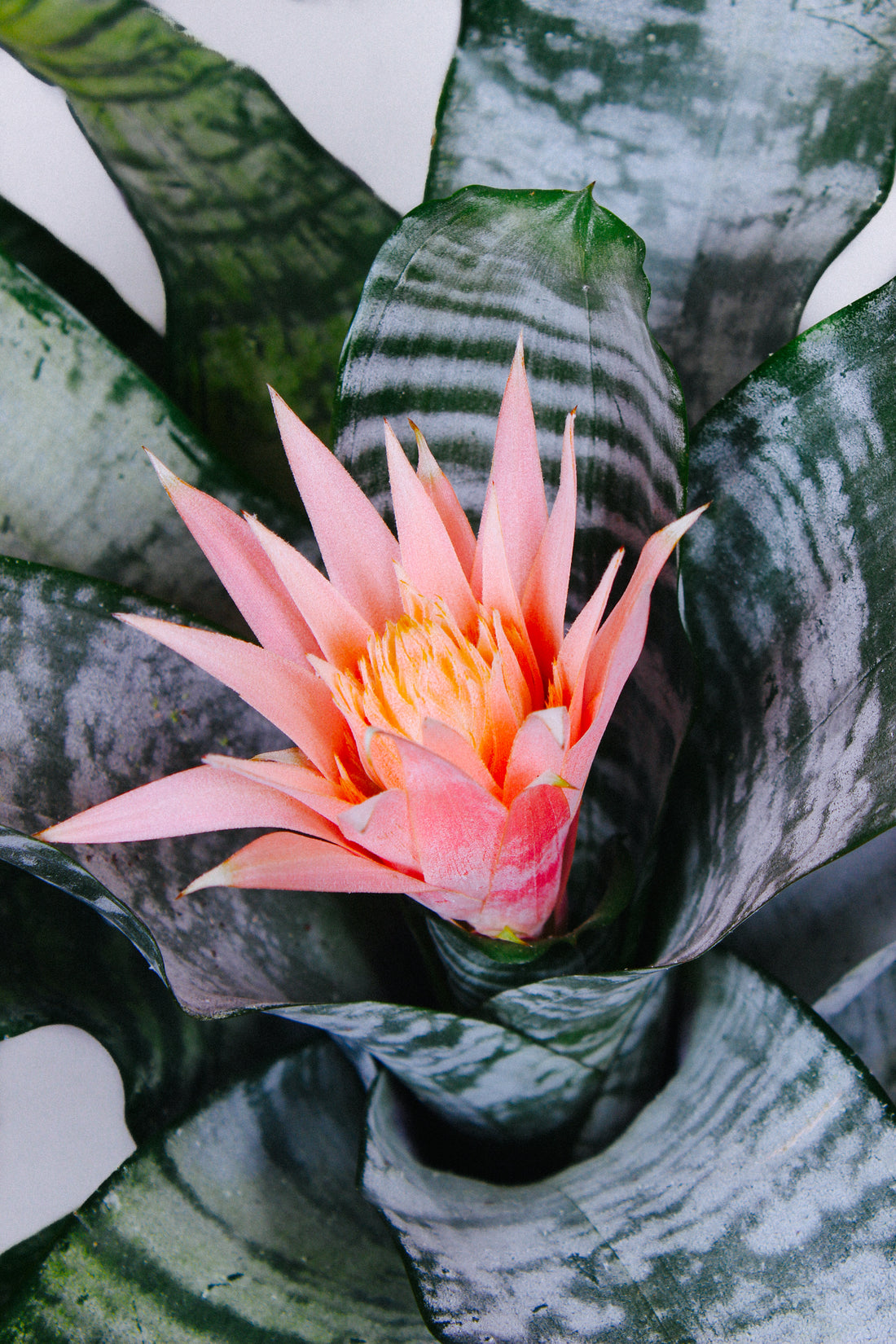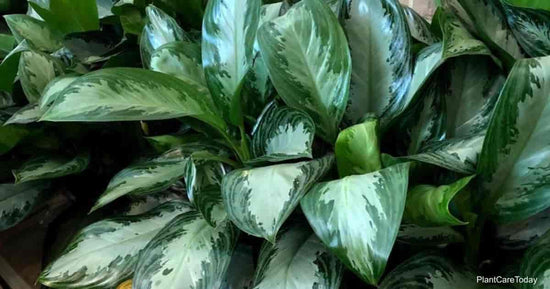Everything you need to know to care for this tropical, flowering symbol of renewal + protection.
Maintenance: Intermediate | Climate: Warm+Humid | Light: Bright+Indirect | Watering: Consistent | Pet Safe: Yes
CHARACTERISTICS
Bromeliads are native to the tropical regions of South America, growing in nearly 3,000 different varieties. These plants have a unique life cycle that "ends" shortly after their bloom dies. The flower (bract) lives for about 6-12 months. After the bloom dies, the main plant will begin to decay and sprouts "pups" at the base of the plant. These pups are how the plant continues its life cycle.
LIGHT
Bromeliads prefer bright and indirect light, though it can handle medium-lit spaces as well. If your home or room is dim, use plant grow lights and be sure to avoid direct sunlight if it's near a window.
WATER
Bromeliads absorb water through the air around them and are sensitive to being overwatered. We recommend watering your Bromeliad by any of these methods:
- Water through the "vase", where the leaves meet in the center. Fill the vase every 1-2 weeks during summer and every 2-3 weeks during winter. Remove stagnant water after 4 days.
- Water the soil after the top 3 inches have dried, or
- Mist generously around the central vase and topsoil 1-3 times per week.
Tip: Rainwater or distilled water is best.
AIR
These tropical plants require a warm and humid environment. If you live in a tropical area, feel free to keep them outside in partial shade during the warm months. Indoors, you’ll want to keep temperatures between 65º-85º with a boost of humidity. Add moisture to the air via:
- Adding a humidifier nearby
- Creating a pebble tray that lives underneath the pot
- Misting the leaves 2-3x per week with non-tap water
- Placement in a bathroom or kitchen, if lighting is suitable
PLACEMENT
Bromeliads are living symbols of renewal and protection. This plant spends its entire life growing to produce its first and only bloom before sprouting mini pups that start the life cycle anew. We encourage you to place your Bromeliad in a room that can offer the best environment and attention, as well as intentionally to adopt this symbolism into your life.
POTTING + SOIL
Because Bromeliads are unique plants that absorb moisture from their environment, they don't make the same use of soil as other plants. They also have fairly small root systems. Bromeliads soil should be loose and well-draining, using amendments like sand, perlite, charcoal, coco coir, or vermiculite.
Bromeliads at the flowering stage most likely won't need to be repotted.These plants spend their life maturing in order to bloom the flower (bract) so they can begin reproducing new plants. When the flower dies, the plant will begin to decay and the "pups" that grow at the base of the plant can be removed to grow into its own plant.
To Propagate a Bromeliad:
- Locate the small pup(s) that sprout from the base of the plant. They grow leaves in a tight, narrow cluster.
- Using a clean knife or your hands, cut/seperate the pup from the plant at the roots.
- Pot the pup(s) in a small pot (2"-4" wide) with loose, well-draining soil
- Keep it moist to encourage roots to grow. Follow the standard Bromeliad care listed above.
- Watch it grow into maturity to produce its own flower and offspring after a few years of care. Well done!
COMMON ISSUES
BROWN LEAVES
Direct sunlight, under watering, and dry air are the most common reasons you'll see brown leaves developing on your Bromeliad. Review the water and humidity it's received. If you have it near a west or south-facing window, be careful that it's not in contact with direct sun rays. Leaves may also brown as a result of age.
YELLOW LEAVES
Yellow leaves on a Bromeliad are commonly due to a moisture imbalance. If you have been watering it appropriately, consider what type of light its receiving. These will need some amount of light coming in otherwise they will lose their color. Lastly, yellow leaves can be caused by pests or natural aging.
DROOPING BROMELIAD
Drooping Bromeliad leaves happens with age but it's also a sign that something may be missing in its care. Ensure it has access to the right amount of light, moisture, and humidity. If something in its environment recently changed, it will need some time to adjust.
MUSHY LEAVES OR CENTER "CUP"
Mushy leaves are often a sign of overwatering, poor drainage, or root rot. Water should not sit in the inner "cup" where the leaves meet for more than a few days, otherwise it will risk fungus and decay. These plants are very sensitive to being overwatered. If you may be heavy handed, try misting the soil and leaves instead of pouring water during your routine.
BROWN, WILTED, OR DYING FLOWER
If you've cared for your Bromeliad properly yet you notice the flower is dying, breathe easy knowing that this is simply the plant's natural life cycle. In this stage, the flower is dying because the plant has produced offspring at the base of the plant. These mini plants can be separated and put into their own pots to start the life cycle anew.





